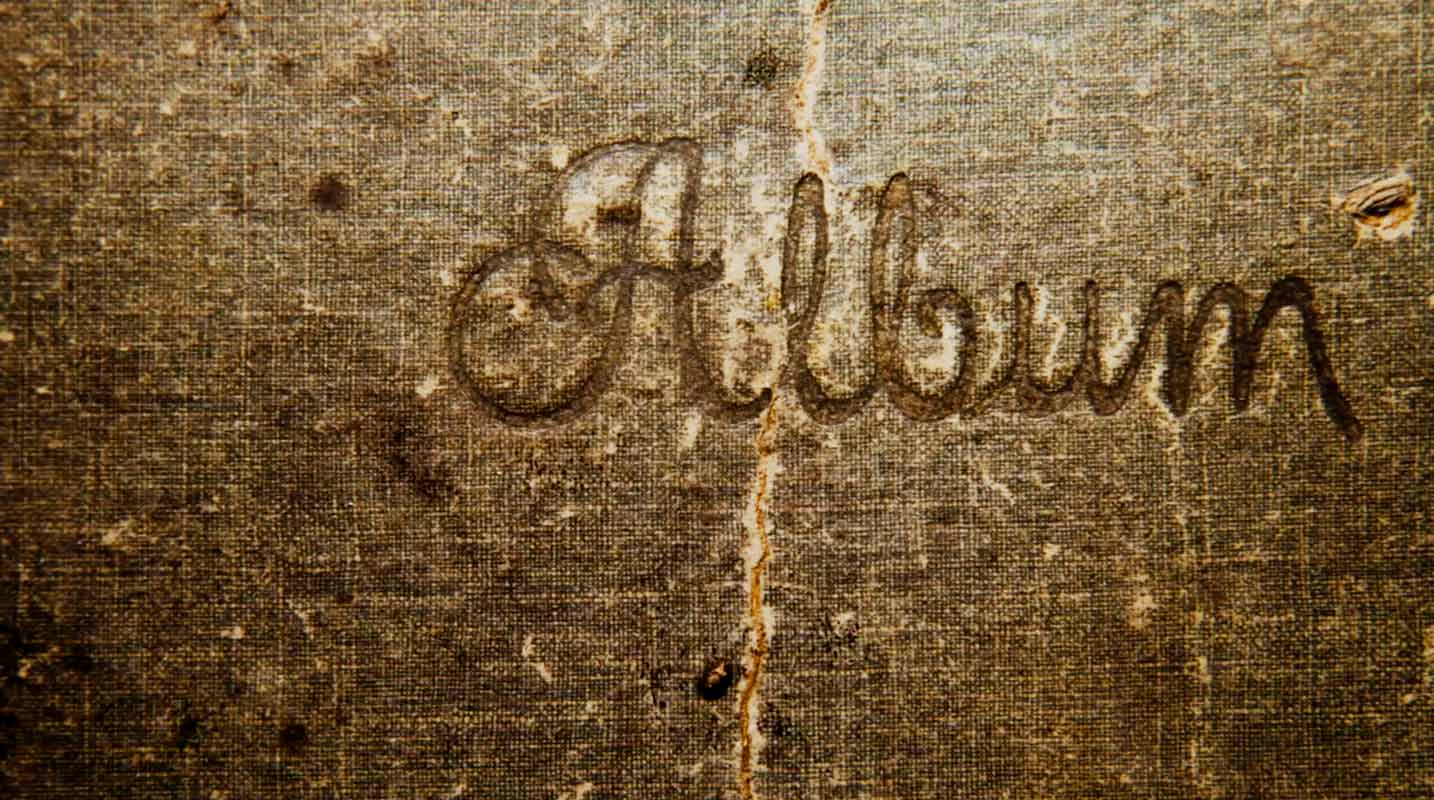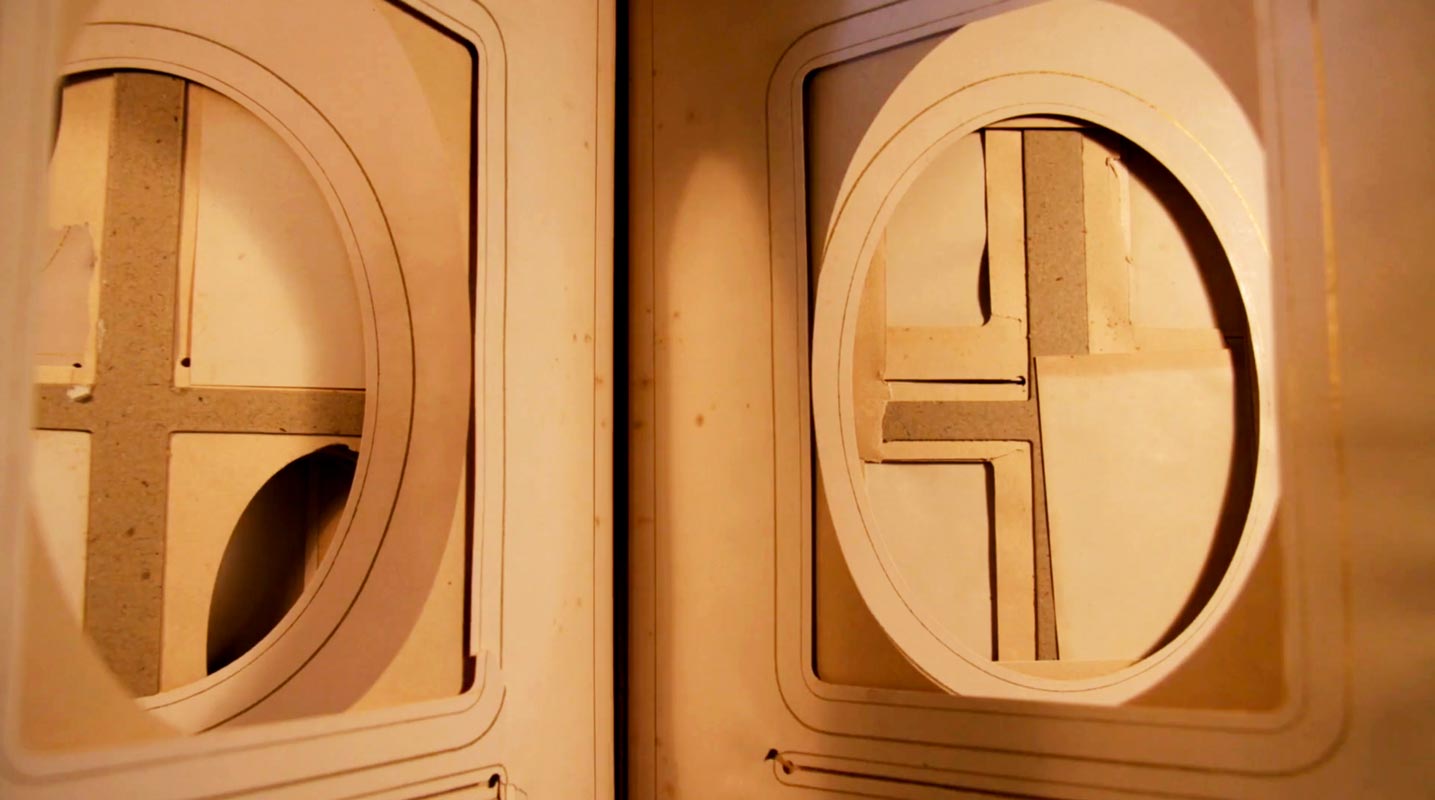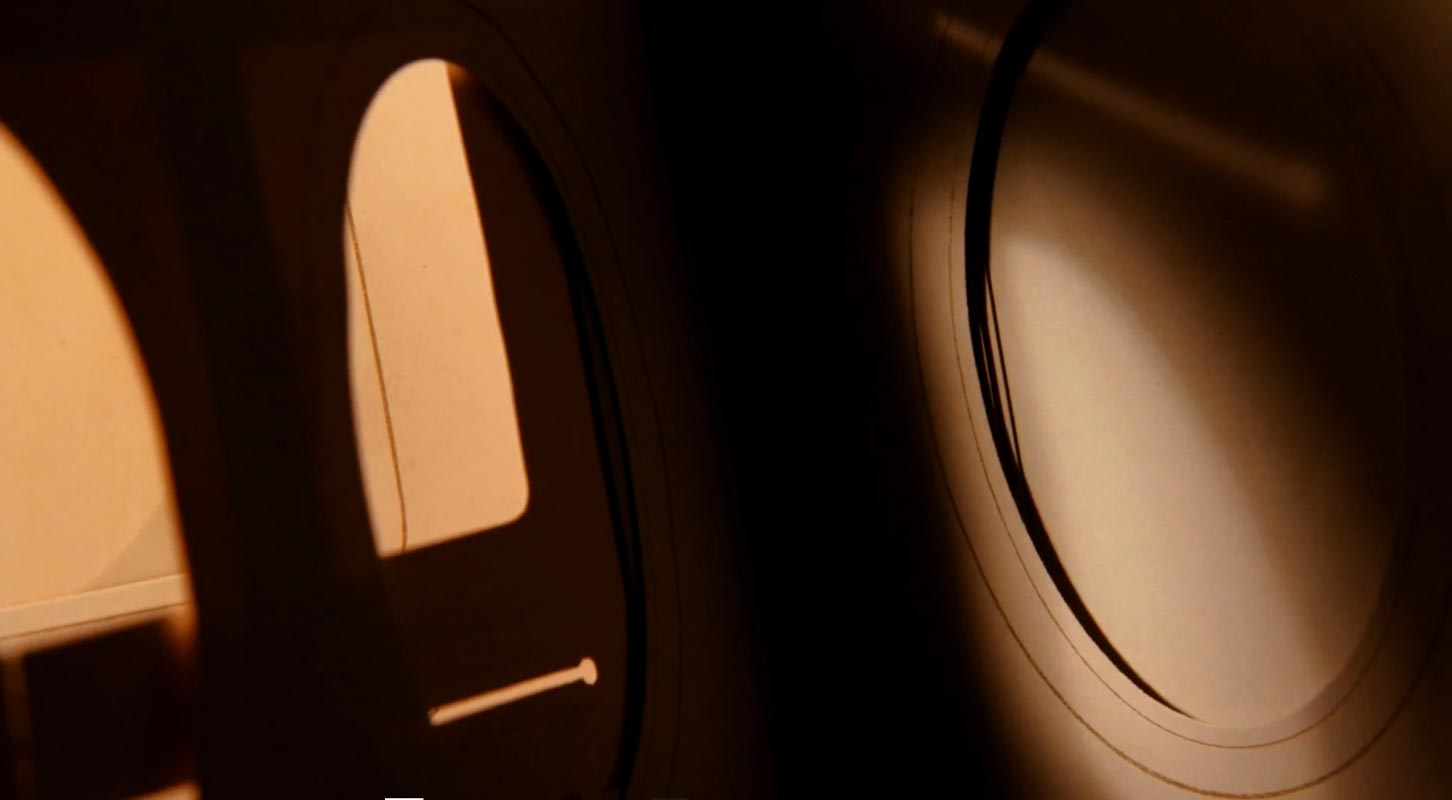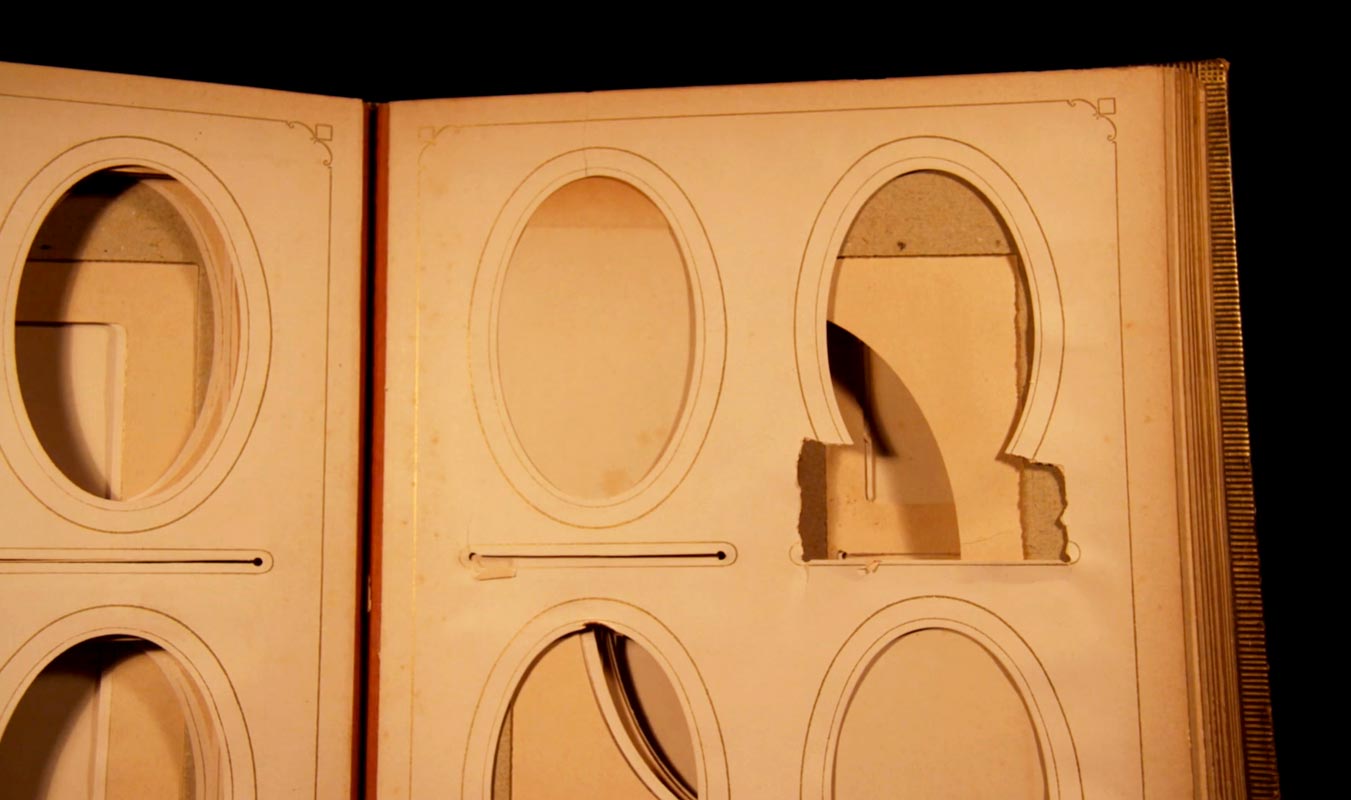Janie Geiser
In Janie Geiser's photo-based films, she has been obsessed with unearthing possible and impossible narratives from found photographs and related images. For the Masterclass, she will discuss the process of constructing her films, her overall approach to the moving image, and other aspects of her work, including performance and installation.
First Session: Fabricated Histories, will focus on two recent photo films: Flowers of the Sky (2016) centers on two panoramic photographs depicting a 1949 gathering of members of the Masonic Order of the Eastern Star. 22 Light-years (2021) merges found photo negatives from the 1940’s with screen recordings Janie Geiser made while designing fictitious homes and landscapes by manipulating consumer home design software.
Second Session: Presence and Absence, is centered on two photo-related films. Valeria Street (2018) began with a series of seven found slides of her father and four other men, gathered around a table in a generic mid-century office. The film explores the implications suggested in the images about power, complicity, and the landscape of industry. Absent Objects (2020) examines three empty photo albums as evidence of both memory and loss.
Flowers of the Sky
Digital video, 9.12 min, 2016
Synopsis
Flowers of the Sky (a medieval term for comets) draws on two panoramic photographs, found in a Los Angeles thrift shop, that depict a gathering of members of the Eastern Star, a Masonic order. In the first photograph, taken at a banquet meal, the participants are seated at tables and facing the camera. In the second photograph, everyone is dressed in ritual robes, looking away from the camera and towards a stage. A single figure stands there, centered on this platform, and faces them. Everyone is suspended, expectant.
Through isolating parts of the photographs and highlighting the different groupings of the Eastern Star members, Flowers of the Sky reveals and obscures the original events. There is a sense, looking at the photographs, of watching and waiting for something to happen, something beyond the experience of daily life. And something does. Nature reasserts herself, the figures double, vibrate, and rise, trying to escape their emulsive lives, suggesting a rapture that extends beyond their printed world.
Excerpts
Credits
Direction, animation, editing: Janie Geiser
Sound collage: Janie Geiser
Sound mix: Kari Rae Seekins
Digital mastering: Astra Price
Valeria Street
Digital video, 11 min, 2018
Synopsis
"The starting point for Valeria Street was a box of seven slides that had fallen from a shelf in my studio. The slides depict a group of men, posed around a table, looking at a set of documents. They are in a generic office setting, with the blinds closed. Each slide is a different framing of the same event – clearly staged for the camera. In the center, seated, is one man. He holds a pen in his left hand. When I looked at the images, magnified through the camera lens, I saw that this was my father.
In recent films, I've been obsessed with unearthing possible and impossible narratives from photographs of strangers. Not knowing their histories, I’m able to imagine/construct new histories, while attempting to unearth something essential about these photographic documents. I was intrigued and somewhat frightened by the idea of working with these photographs of my father. The images suggest something about work and family, and how much of a life is lived outside of each other's eyes." — Janie Geiser
Excerpts
Valeria Street (excerpts) from Janie Geiser on Vimeo.
Credits
Direction, animation, editing: Janie Geiser
Music composed by Laura Steenburge
Sound design: Janie Geiser
Sound mix: Kari Rae Seekins
Absent Objects
Digital video, 7.41 min, 2020
Synopsis
Three empty photo albums, vessels of lost time and memory beyond reach.
Credits
Direction, animation, editing: Janie Geiser
Sound collage: Janie Geiser
Sound mix: Kari Rae Seekins
Digital mastering: Astra Price
22 Light-years
Digital video, 17.30 min, 2021
Synopsis
A time clash in suspended time, light-years away and light-years long. A house/home is imagined and re-imagined, inhabited by a family who never met. They leave and return. This goes on and on and on.
22 Light-years draws on a range of visual sources, including photographic negatives, diagrams, found patterned papers, and archival footage. These sources merge, sometimes uncomfortably, with video that was screen-recorded while operating a home-designer desktop software program. Creating digital floor plans, landscaping, and roofless homes in real time, and manipulating this imagery away from the software's intent, Geiser fabricates a digitally lush, elliptical, uncanny world, where endless planning never results in a tangible home. Combined with tangible collage materials (negatives, diagrams, flower seed packets) that are filmed frame by frame, the material world wears the skin of the immaterial one, they bleed together, suggesting time as simultaneous, mutable, and unknown.
Excerpts
22 LIGHT-YEARS EXCERPTS from Janie Geiser on Vimeo.
Credits
Direction, animation, editing: Janie Geiser
Sound collage: Janie Geiser
Sound mix: Kari Rae Seekins
Digital mastering: Astra Price
CV
Janie Geiser is a multidisciplinary artist whose practice includes film, performance, and installation. Geiser's work is known for its recontextualization of abandoned images and objects, its embrace of artifice, and its sense of suspended time. Geiser is a Guggenheim Fellow and her film The Red Book was selected for the National Film Registry of the Library of Congress (US).
Geiser's films have been screened at the Whitney Museum, the Guggenheim Museum, the Centre Pompidou, the Salzburg Museum, San Francisco MOMA, the Sharjah Biennial, BFI, and numerous international festivals. Her films are in the collections of the Museum of Modern Art, The NY Public Library's Donnell Media Center, CalArts, and the Library of Congress. The Academy of Motion Pictures Archive has selected her work for preservation. A pioneer of the renaissance of American avant-garde puppet theater, Geiser creates innovative, hypnotic live performances that integrate performing objects and projection. Her performance works have been presented at The Public Theater, St. Ann's Warehouse, Redcat, The Walker Art Center, CalArts Center for New Performance, LaMama, and other venues.






